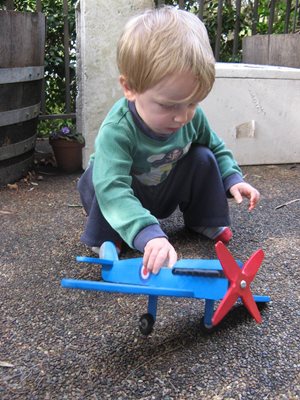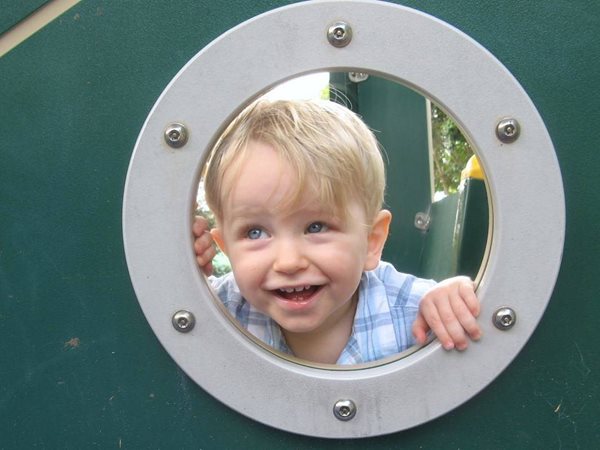Each year in April, we celebrate the international day of human space flight. During a time when young children may feel that their worlds have become much smaller, it could be helpful to remind them that they’re part of something so much bigger.
Learning about space is about venturing into the unknown, promoting creative thinking, ‘what if’ scenarios and expanding curious minds.
In this week’s Amplify!, Hayley Bates from early childhood education STEM PD providers Little Scientists shares some fun ways to teach preschoolers about space, which you can share from your lounge room to theirs!
Is ‘space’ too big for preschoolers to grasp?
At two years old my own child asked me what night-time was. Actually, that’s not strictly true. The conversation went more like…
‘Go back to sleep sweetheart.’
WHY?
‘Because it’s night-time’
WHY?
‘Because the sun’s not in the sky’
WHY?
By the time my husband came in, I was, in my sleep-deprived state, explaining, with the help of a torch and a ball, Earth’s rotational axis. My son was delighted but I’m not too sure how much astrophysics he picked up. He’s only recently started to realise that when we drive from the Blue Mountains to Sydney we are not actually leaving Australia. The sheer scale of space is difficult to grasp.
So, is the topic ‘Space’ too big and too ungraspable for pre-schoolers? Of course not.
To cook scones, you don’t need to understand the chemical formula of baking powder. The details of photosynthesis are not necessary to grow a bean plant. Space is fascinating and provides endless opportunities for discovery with children. When we discover things for ourselves, they develop more meaning to us, we understand them better and we retain the information better and enjoy the process more. Going on a space journey with the children will delight both the adults and children alike.
Launching into books
So where to start?
A book can be a great way to launch into space.
A few books spring to mind, the Owl moon, starts with a winter night walk experienced with all the senses. And of course, my favourite book at the moment being Under the stars – Astrophysics for bedtime by Lisa Harvey-Smith.
Lisa was the keynote speaker at our 2019 Little Scientists conference ‘Sonic Boom’ and spoke in her role as Australia’s Women in STEM Ambassador. So Inspiring!
The topic of Space and Space flight is as big as space itself. So many activities and questions:
- Why not take a flight of fancy? Design another world where the rules are different, a rocket ship or your very own space station.
- What can the children imagine?
- What would they need if they spent six months on a space station?
- What would they pack?
Reaching for the stars
The stars are a wonderful source of inspiration.
- Making constellation pictures out of clay and matchsticks (or marshmallows and spaghetti),
- Spray bottles with white and yellow paint and sheets of black paper to make your own galaxy,
- Sensory bags and bottles with stars and planets, or tracing shapes and letters in ‘stardust’. Did you know that common household dust is approximately 1% stardust? This apparently is not an excuse for not cleaning.

Then there are the planets. Whether you research with the children what the different planets are like, find out what pictures the Mars rover sent back, or construct a Paper Mache solar system – there is plenty of space for an investigation.
I was taught a very clever phrase for remembering the planets that might come in handy for your own space exploration:
My
Very
Educated
Mother
Served
us
Noodles.
Mercury, Venus, Earth, Mars, Saturn, Uranus, Neptune.
Of course, she used to serve us nine pizzas but Pluto is now considered, after 70 years of being a planet, just to be an icy body!
Get to know the man on the moon
The moon, with its many different faces in the night sky has fascinated people for centuries. It’s our closest, tangible celestial body that can often be seen in the morning or evening and is a wonderful starting point on your space journey. The moon is embedded in many cultures worldwide, from the European man in the moon to Chinese Lunar festival.
I would also recommend that you use the Australian Indigenous Astronomy as a very valuable resource. Check out their incredible stories and resources. Why not take a pretend walk on the moon with its lack of gravity? A wonderful way to incorporate imaginative movement, play and dress-ups. Australian tracking stations played a big part in the first moon landing by Apollo 11.
Rustle up a rocket ship
And then, of course, there is space travel itself.
Space-craft is rife in early childhood. I’m sure most of us could create a passable rocket ship given a cardboard tube and the contents of our handbags or desk drawer. And as for powering them, balloon rockets, baking soda and vinegar and Mentos and Coca Cola spring to mind.
A beautiful activity to tackle is one straight out of our Chemical Reactions workshop. Although it’s not technically a chemical reaction at all, dropping small items such as small beads, raisins, Lego bricks and Mentos into soda water and watching the carbon dioxide bubbles form is a lovely way to investigate this phenomenon.
The objects act as a catalyst to encourage the carbon dioxide to form bubbles of gas and this helps explain why the Mentos and coke rockets fly.
 Go on a space journey with the children and discover stars!
Go on a space journey with the children and discover stars!
The International Day of Human Space Flight gives lots of scope for flights of fancy, cultural links and science exploration. Why not let your imagination take flight?
Links and resources
Little Scientists have recently launched their own learn from home channel, Little Scientists at Home. Here you can find fun science explorations to keep preaschoolers busy with things you can find around the house.
The below video is from the Static Electricity activity:
Other useful links from the article:
About Hayley Bates
Hayley has an insatiable thirst for learning – about everything! Her sheer joy of discovery and passion for professional development makes her the perfect person to run the Little Scientist’s House Certification program. Never happier than seeing what happens to balloons in the freezer or exploring the projects submitted by services for certification, her enthusiasm is complemented by her background in science and maths making her the ideal coordinator for our Little Scientists Houses. Hayley has taught across continents from preschool to tertiary and in botanic gardens to sewage plants.